2017 Audi Q7: First Drive

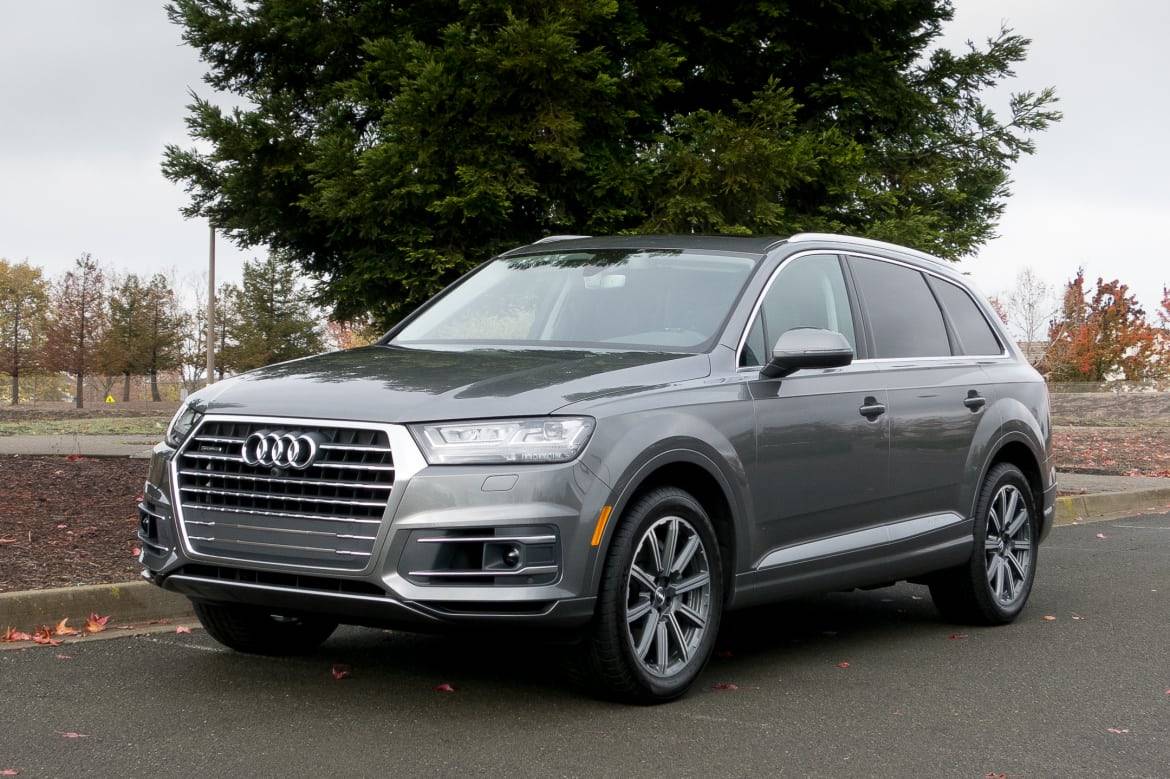
CARS.COM — Redesigned for 2017, the Audi Q7 is a driver’s SUV that emphasizes performance over packaging.
Related: 2017 Audi Q7 Starts at $55,750
In what’s become an established segment of three-row luxury SUVs, the Q7 lacks the visual spectacle, plush ride or outright practicality of certain competitors, but it’s a dynamic, if expensive, alternative. The Q7 comes in Premium, Premium Plus and Prestige trim levels, all with seven seats and all-wheel drive. It goes on sale in early 2016 for the 2017 model year after skipping the 2016 model year. At a California media preview, I drove Premium Plus and Prestige versions.
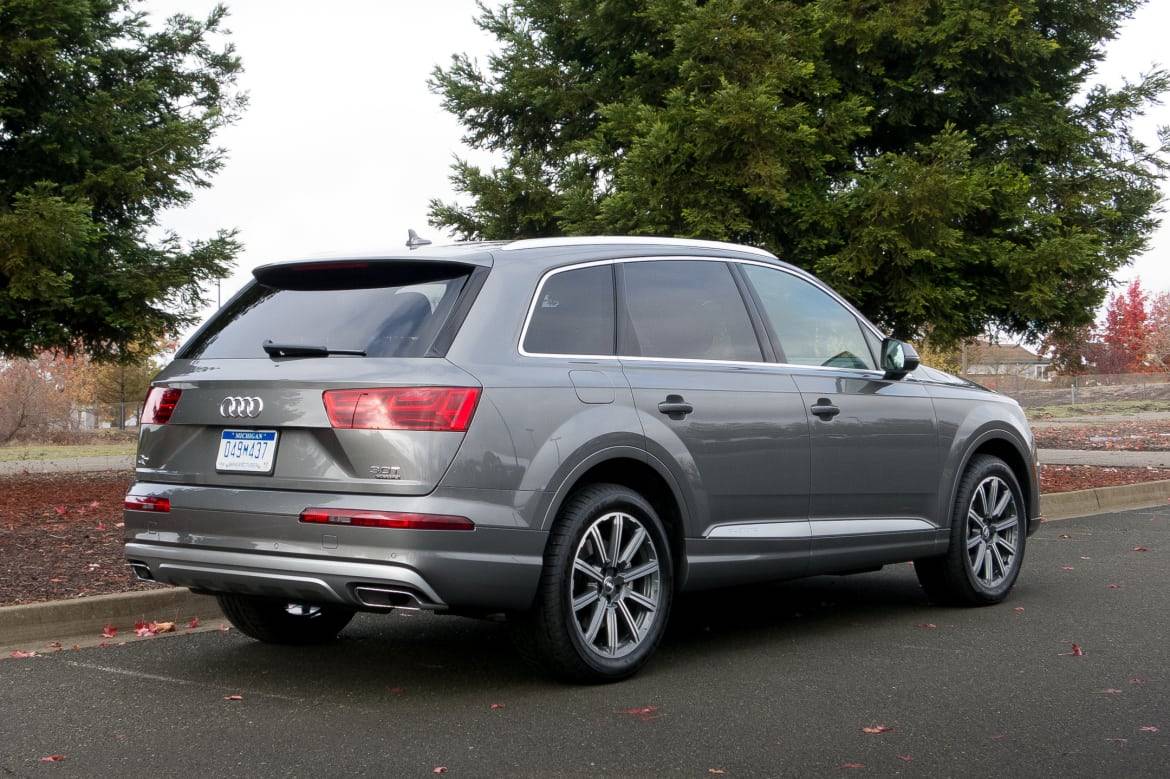
Exterior & Styling
Redesigned after a seeming eternity in its first generation, the new Q7 looks more wagon-like than its predecessor, whose body-heavy profile shared platforms with the Volkswagen Touareg and Porsche Cayenne. (Audi and Porsche are both Volkswagen Group brands.) No longer a corporate sibling of the other two, the 2017 Q7 rides a unique platform and looks less imposing overall — a result of taller glass, lower headlights and a squatter, six-sided grille.
Thanks to a lot more aluminum, which is lighter than steel, the Q7 is also anywhere from about 250 to nearly 500 pounds lighter than its ponderous predecessor, depending which trim you compare. But at 4,938 pounds, the new Q7 is still heavy. (An all-wheel-drive 2016 Acura MDX is some 700 pounds lighter.)
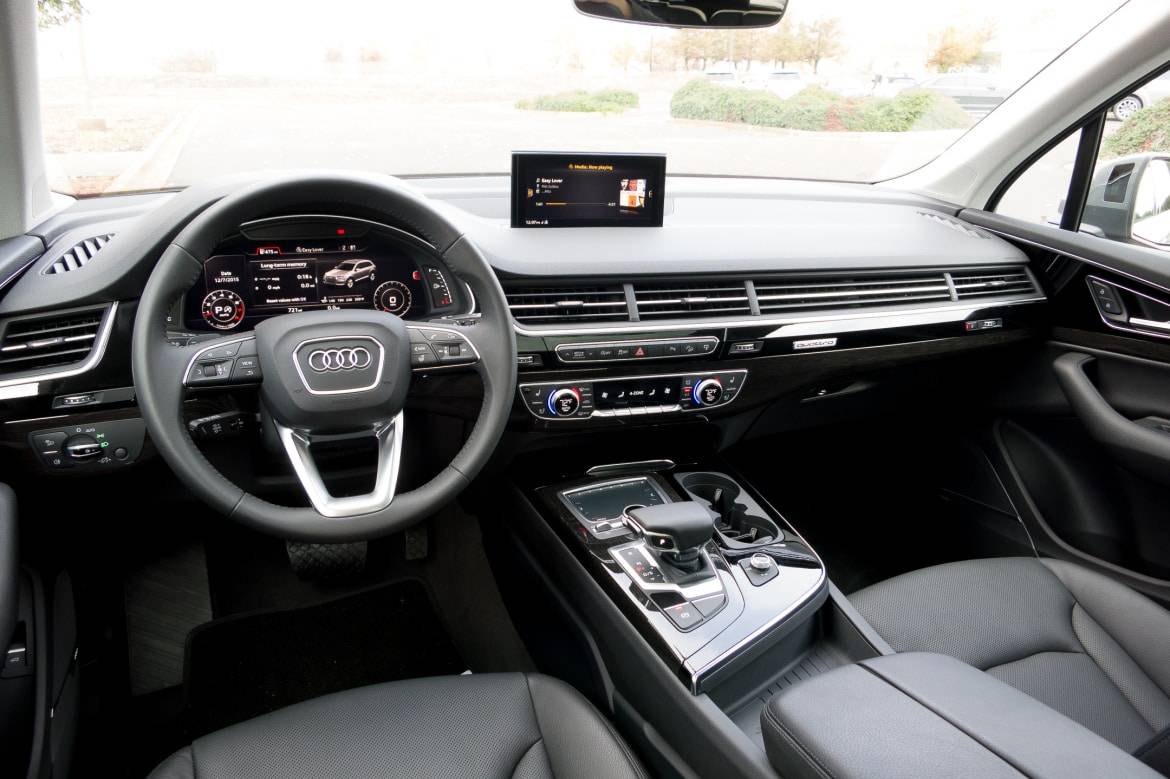
How It Drives
The Q7 boasts decent straight-line performance, and it shines on serious curves, no doubt to the dismay of any kids in back. The SUV’s sole drivetrain as of launch is a supercharged 3.0-liter V-6 that’s good for 333 horsepower, and after a moment of initial accelerator lag, it revs strongly and hard. Even with three adults aboard, our test car had sufficient reserves to pass slower highway traffic and conquer steep uphill grades. Audi estimates the Q7 hits 60 mph in just 5.7 seconds, a time that rivals many compact sport sedans.
The Q7’s eight-speed automatic transmission is a plus, shifting smoothly and quickly enough to go unnoticed. I’ll take it. In an age where gear-laden transmissions often obstruct performance, an eight-speed that keeps to itself is a good thing.
Like in so many cars, a dashboard button selects among a few modes that vary driving characteristics. The sportiest mode, Dynamic, cuts a lot of power-steering assist and introduces much sharper accelerator progression, though the initial lag persists. Still, if you barrel around hairpin turns in Dynamic mode, the Q7 excels. The steering is direct and lively; the chassis charges through corners with little body roll, and the tires — chunky Goodyear Eagle Sport P285/45R20 all-seasons on our test cars — have carlike grip. The brakes deliver fade-free stopping power all day long, and the transmission resists any untimely shifts heading into the corner. Coming out of a corner, the engine’s broad torque curve (325 pounds-feet from 2,900 to 5,300 rpm) hustles the Q7 back up to speed even if you’re a gear too high.
We’ll need to test a Q7 at Cars.com’s Chicago headquarters to issue a final verdict on ride quality, but my early impression is the SUV’s standard suspension with conventional steel springs is firm but livable. It’s not choppy, as the similarly configured 2016 Volvo XC90 can be. The Q7’s base 19-inch wheels have higher-profile tires (P255/55R19s), which could soften ride quality as well.
Shoppers who want more ride comfort should consider the Q7’s optional adaptive air suspension, which eliminates some of the bounciness over rapid elevation changes and improves general isolation. It makes for a refined experience that complements the SUV’s overall quietness, but for outright comfort, the XC90’s optional — and exceptional — air suspension has Audi beat.
If you want more comfort without stepping up to an air suspension, the Acura MDX, Buick Enclave and the Infiniti QX60 all ride on the softer side.
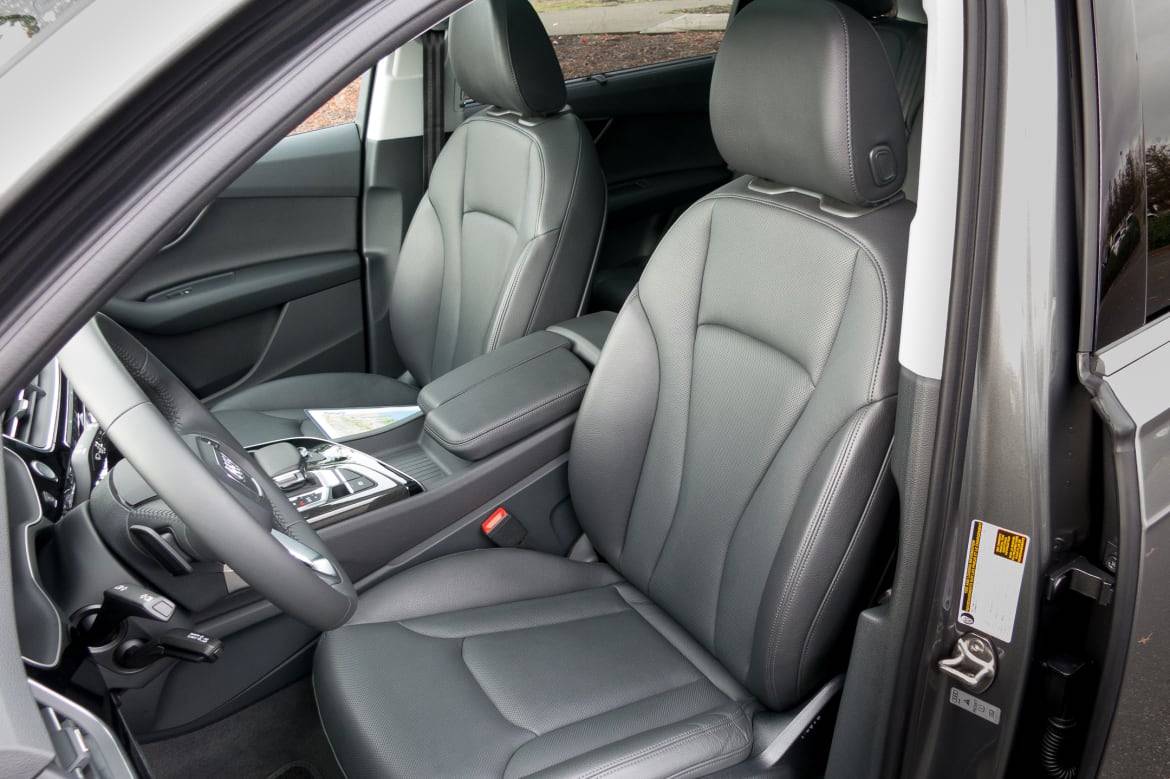
Interior
The Q7’s layered dashboard is free of clutter, with a thin multimedia screen that motors out of the center. The only stylistic head-scratcher is a continuous band of air vents that span the passenger side — functional ones, at least. Build quality is up to Audi snuff, with consistent graining down to foot level and sufficient padding in areas where your arms and elbows rest. It’s an area where a few other Audi models still cheap out.
Heated leather seats with power front adjusters are standard. Front-seat coolers and massagers are optional. The chairs have good adjustment range and a decent grade of leather, and you can swap it out for premium cowhide with an optional Luxury Package that also wraps lower portions of the doors and center console in leather.
The second row has good seating height and headroom, though a large center floor hump limits footwell space. Legroom ranges from acceptable to good, depending on where you position the sliding second row. With the seats all the way back, the third row is essentially a technicality; second-row passengers will need to give up a few inches for anyone to really sit back there. Third-row headroom is tight regardless, and accessing the seat requires a two-step tumbling process for the second-row chairs that’s neither intuitive nor low-effort. Competitors like the MDX and QX60 have better third-row access, and the Buick Enclave’s captain’s chairs leave a center aisle. The Q7’s standard third row is a packaging afterthought.

Cargo & Storage
Cabin storage is modest, with an open tray near the cupholders but a shallow center console. Open the standard power liftgate and the Q7’s power-folding third row drops in a 50/50-split for a flat load floor. The second row folds in a 35/30/35 split. Space behind the third row is a modest 14.8 cubic feet; if you drop the second- and third-row seats, maximum volume totals 71.6 cubic feet. Those are competitive figures, but if you really need to load up the gear, the Enclave’s vast interior (a deep 23.3 cubic feet of cargo space behind the third row that’s expandable to a maximum 115.2 cubic feet) is superior.
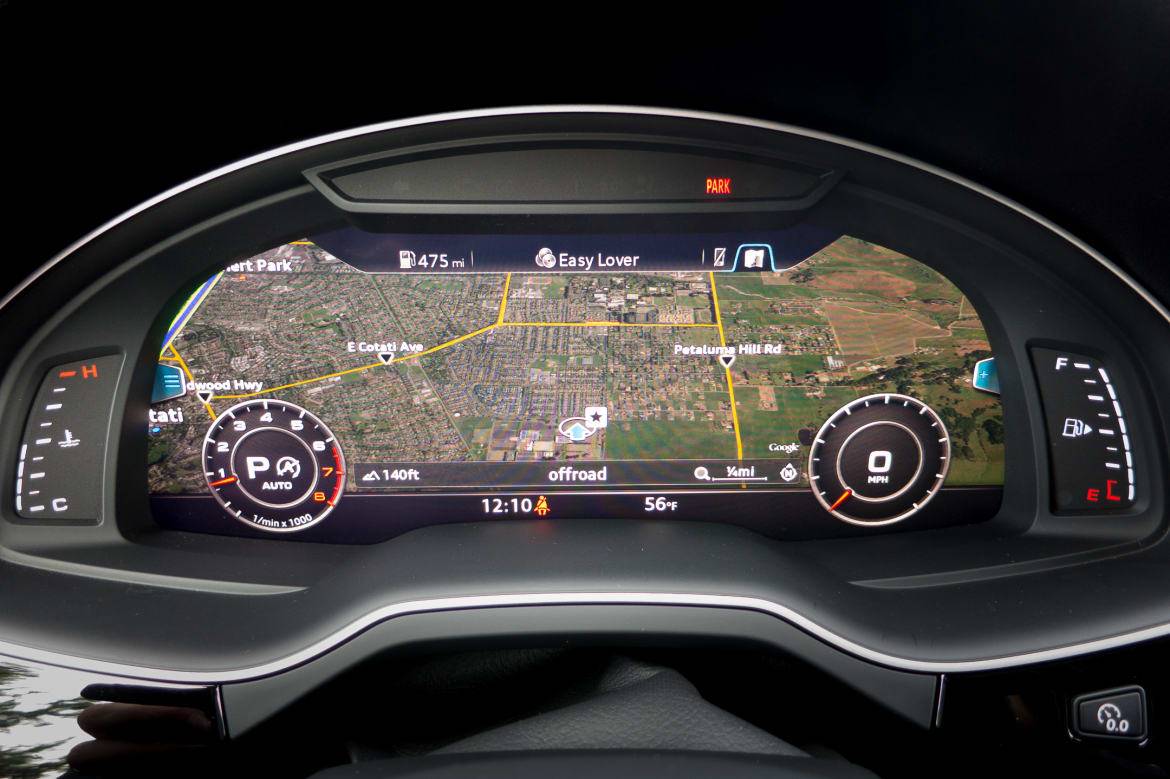
Ergonomics & Electronics
The Q7’s 8.3-inch center screen augments a 7-inch display between the gauges, but technophiles will want Audi’s optional “virtual cockpit” — a 12.3-inch display that replaces the gauges altogether. Historically, simulated gauges have aged poorly because screen resolutions have continually improved in competing vehicles, but Audi’s virtual cockpit is quite high-res for today’s standards, and its functionality justifies the layout. The display can shrink and simplify the gauges to prioritize other displays, from multimedia sources to the navigation map. The map comes complete with Google Earth satellite imagery via the Q7’s subscription-based 4G LTE Wi-Fi service, and Audi says the images remain — though they won’t update — if you don’t pay the subscription after the introductory six-month period runs out.
You can switch the virtual cockpit displays via steering-wheel controls or Audi’s MMI controller, which adds a huge touchpad with clickable areas for radio presets and menu shortcuts. The pad has pinch-and-swipe functionality for zooming and surfing, and the motions are seamless.
Still, not everything else works in a jiffy. Certain submenus have inconsistent load times that can last as long as several seconds. At one point our test car showed a full satellite-image map in the virtual cockpit display but a missing map on the dashboard display, which went on for several minutes. Audi’s integration of Apple CarPlay and Android Auto — systems designed for touch-screens — has clear limitations with the knob-based MMI approach. The finger pad doesn’t help: CarPlay’s Apple Maps ditches its pinch-and-swipe capabilities for old-school direction and zoom keys, but Audi officials were quick to blame the limited usability on Apple.
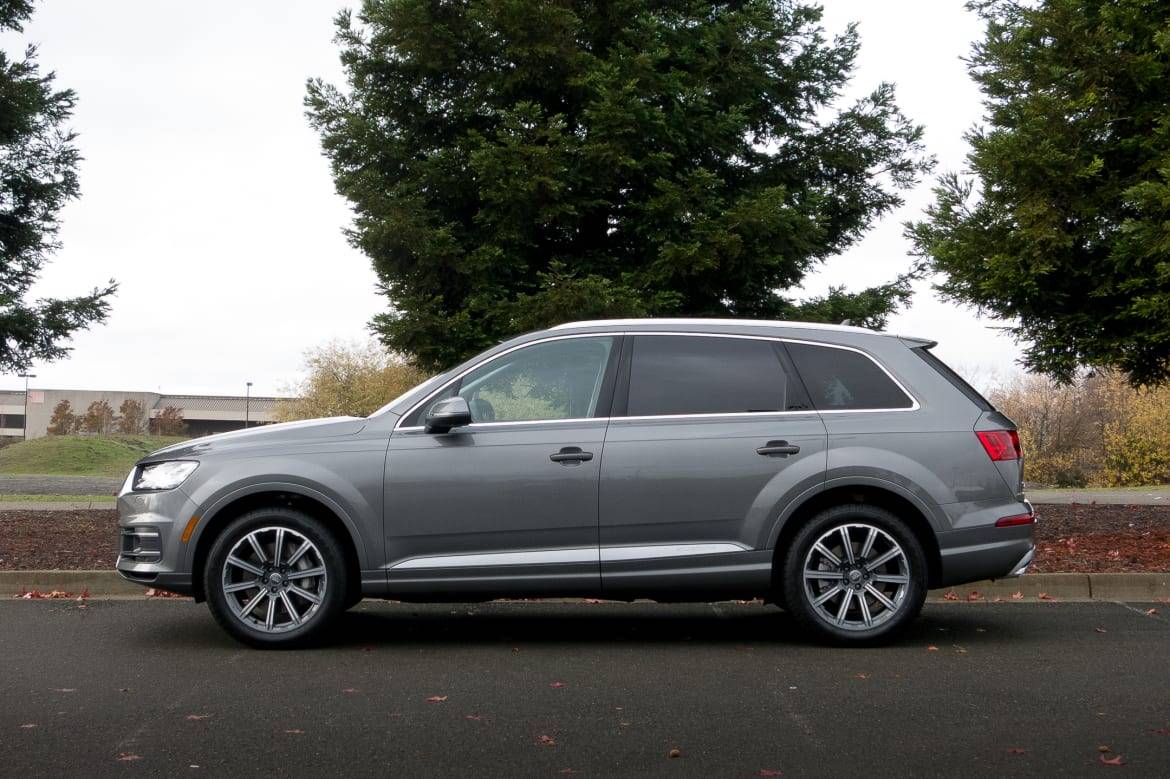
Value in Its Class
The Q7 has one thing in common with other three-row European luxury SUVs: It’s expensive. Including a destination fee, a Q7 Premium starts around $56,000. The Premium Plus, which Audi expects to be the most popular trim, starts around $60,000. That’s in the neighborhood of average transaction prices for the XC90 and X5, but it’s a $10,000-plus climb versus Audi’s Japanese and Detroit competition.
Prices only escalate from there. The Q7 Prestige runs just over $65,000, and if you throw in Bang & Olufsen audio, the extended-leather luxury package, the adaptive air suspension and more, the SUV can top out close to $90,000. Audi says it will eventually introduce a Q7 2.0T to round out the entry-level side, and it also plans to reprise its diesel V-6 once it resolves the current diesel crisis — which, as of this writing, is still a long way off.
Value is not a Q7 strength, at least for now. But luxury SUV shoppers don’t seem fazed by the European price premium. Shoppers have bought about as many BMW X5s as they have Acura MDX SUVs, and the redesigned — and expensive — XC90 is now Volvo’s sales leader. The Q7 isn’t the dramatic must-drive redesign that Audi may have hoped for, but it’s a worthy option for family shoppers who like to drive.

Former Assistant Managing Editor-News Kelsey Mays likes quality, reliability, safety and practicality. But he also likes a fair price.
Featured stories

15-Year Car Loans Aren’t a Thing, But Americans Are Getting More Comfortable With Long Loan Terms

2025 Kia Telluride Review: Rougher Roads Ahead



